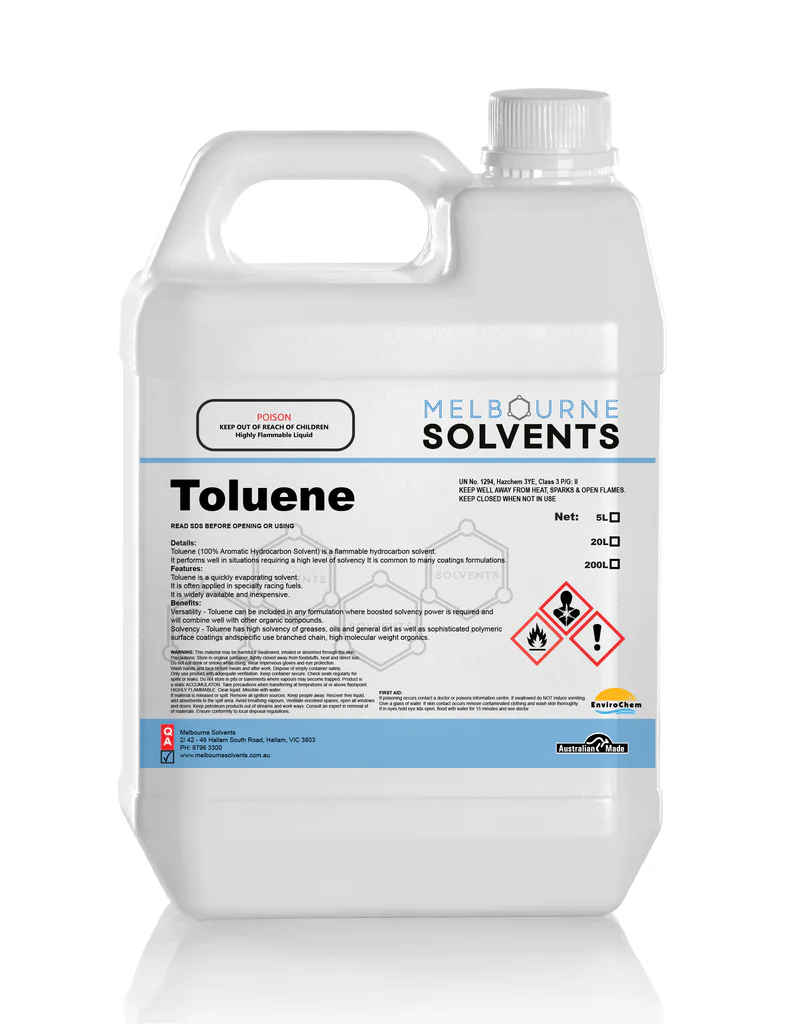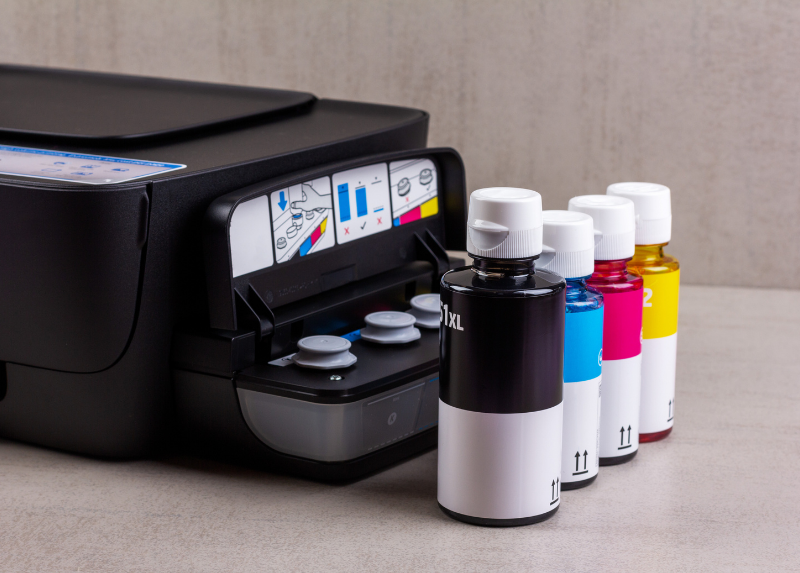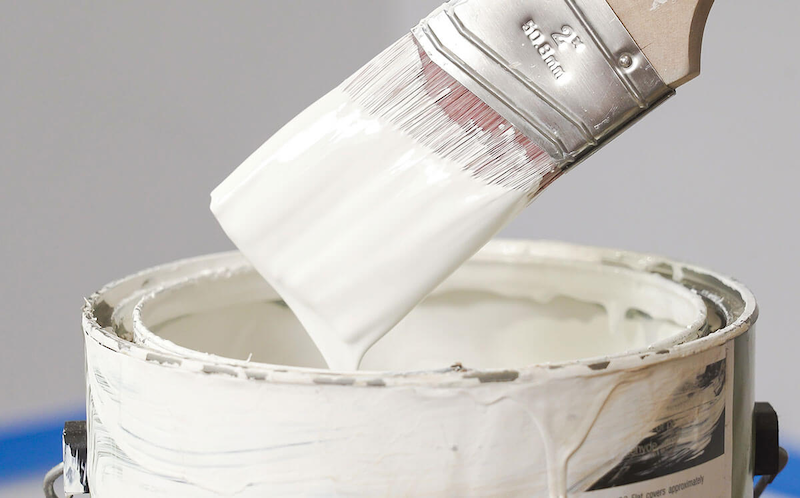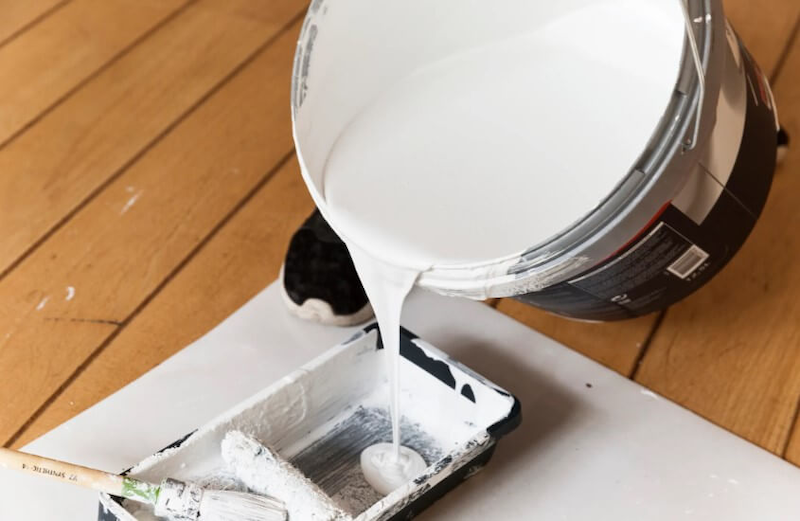What is PVC Film Ink Diluent? Functions, Types, Important Usage Notes
06/06/2025
|
Industry news
PVC film ink diluent is a vital element in the printing industry, especially when printing on plastic materials such as PVC, PET, or decal films. This solvent helps adjust the ink’s viscosity, enhances adhesion to the material surface, and supports faster and more even drying of the ink. To ensure optimal printing results and safe usage, it is crucial for technicians to choose the right type of diluent based on the specific ink and printing conditions. Selecting the appropriate PVC film ink diluent not only improves print quality but also ensures the durability and appearance of the final product. In this article, we’ll take a closer look at the role, classification, and key precautions when using PVC film ink diluents. Let’s explore!
What is PVC film ink diluent?
PVC film ink diluent is a liquid chemical used to dissolve, adjust the viscosity and improve the adhesion of ink on the surface of PVC (Polyvinyl Chloride) plastic film. These solvents help the ink achieve the right fluidity, dry quickly, and adhere well to the PVC surface, while ensuring sharp, durable and aesthetic print quality.
The Role of PVC Film Ink Diluent
PVC film ink diluent is far more than just a medium to dilute ink — it plays a vital role in ensuring print quality, production efficiency, and the durability of the final printed product. Below are some of the key functions it serves in the printing process:
Enhances Adhesion and Surface Gloss
PVC film ink diluent helps soften the surface of materials like PVC, PET, or other plastics in a short time, allowing ink to adhere more effectively. These materials typically have smooth, non-porous surfaces, which make it difficult for ink to stick without the assistance of a suitable diluent.
In addition to improving adhesion, the diluent also:
- Reduces the risk of peeling or scratching after printing.
- Enhances the natural gloss of the printed surface, resulting in a more vibrant, professional finish.
Adjust the speed of the ink
PVC film ink diluent allows to adjust the ink speed by changing the ratio between ink and medium, depending on the saving conditions, speed, material type or technical requirements. When used properly, the solvent helps the ink to be distributed evenly, smoothly and ensures uniformity and sharpness for the output image. On the other hand, controlling the ink speed helps reduce material loss and save production costs because the ink level used is optimized without being wasted.

Helps ink dry quickly
PVC film ink diluent is designed with a suitable evaporation rate, carefully controlled to help the ink dry quickly on the surface, absorb well and not smudge, helping the printing process go smoothly, without clogging the conveyor belt, printing incorrectly, etc. Not only does it help the ink dry quickly, but PVC ink solvent also makes the ink dry evenly, without creating streaks, shiny or dull spots or peeling before printing.
Common Solvents
Here are some common solvents used to mix ink on PVC film:
Ethyl Acetate (EA)
- Formula: C4H8O2 (CH3COOCH2CH3)
- Characteristics: Liquid solvent, colorless, light fruity smell, fast evaporation, good solubility with many types of resins and inks.
- Applications: Commonly used in flexo printing on PVC film, suitable for oil-based inks and UV inks.
- Advantages: Less toxic than some other solvents, creating sharp prints.

Xylene
- Formula: C6H4(CH3)2
- Characteristics: Colorless liquid, aromatic smell, medium evaporation, insoluble in water but soluble in other organic solvents.
- Applications: Used for screen printing and gravure printing on PVC film, especially with oil-based inks.
- Note: Highly toxic, need to be handled with care.

Isopropyl Alcohol (IPA)
- Formula: C3H8O
- Characteristics: Alcohol solvent, fast evaporation, mild odor, more environmentally friendly than hydrocarbons.
- Applications: Suitable for flexo printing on PVC film, often used with water-based ink or UV ink.
- Advantages: Helps ink dry quickly, less affecting the quality of the print.

Butyl Acetate
- Formula: C6H12O2
- Characteristics: Mild odor, low toxicity, medium evaporation rate, effective control of drying time.
- Applications: Often used for flexo printing on PVC film, especially with acrylic ink.
- Advantages: Creates durable prints, good adhesion.

Dimethyl Carbonate (DMC)
- Formula: C3H6O3
- Characteristics: Colorless organic solvent, mild odor, environmentally friendly, medium evaporation rate.
- Application: Used in screen printing or gravure printing on PVC film, suitable for oil-based inks and some water-based inks.
- Advantages: Low toxicity, reduced VOC (volatile organic compounds) emissions, suitable for sustainable printing requirements.
Toluene
- Formula: C7H8
- Characteristics: Colorless liquid, evaporates quickly, dissolves strongly, but is highly toxic.
- Application: Often used in gravure printing on PVC film, especially with oil-based inks.
- Note: Must be used in a well-ventilated environment due to high toxicity.

Common Solvent Mixing Ratios
The solvent mixing ratio depends on the type of ink, printing technique, and the specific requirements of the manufacturer. Below are some common mixing ratios recommended by K-Chem.
Screen printing on PVC film
- Ratio: 80% Ethyl Acetate + 15% DMC + 5% Butyl Acetate
- Purpose: Create the right viscosity, ensure good ink adhesion on the PVC surface, and control the drying time.
Note: DMC helps reduce toxicity and improve environmental friendliness.
Flexo printing on PVC film
- Ratio: 70% IPA + 20% DMC + 10% Xylene
- Purpose: Ensure the ink dries quickly, suitable for high-speed printing, and maintains the sharpness of the print.
Note: Check the viscosity with a Ford cup to ensure a uniform mixture.
Gravure printing on PVC film
- Ratio: 60% Toluene + 30% Ethyl Acetate + 10% DMC
- Purpose: Increase adhesion and color fastness on PVC surface, DMC helps reduce VOC.
Note: Toluene needs to be handled carefully due to its flammability and toxicity.
The above are some common ratios. Depending on each specific case, K-Chem technology will recommend appropriate ratios for optimal printing efficiency.
Some safety notes when using solvents
Using solvents for ink mixing on PVC film requires strict adherence to safety measures to protect health and the environment. Here are some important notes:
Personal protective equipment (PPE)
- Use chemical-resistant gloves, masks, goggles, long-sleeved shirts, and hard hats to avoid direct contact with solvents.
- Particularly with Xylene and Toluene, wear a respirator to avoid inhaling solvent vapors.
Work in a well-ventilated environment
- Use solvents in a well-ventilated area or a closed room with an exhaust fan to reduce the concentration of solvent vapors in the air.
- Avoid direct inhalation of solvent vapors, as this may cause dizziness, nausea, or lung damage.
Handling of exposure
- Skin contact: Wash immediately with soap and water for at least 15 minutes.
- Eye contact: Flush eyes with clean running water for 15 minutes, then use eye wash and seek medical attention if necessary.
- Inhalation of solvent vapors: Move victim to a well-ventilated area, if there are signs of abnormality (difficulty breathing, unconsciousness), take to hospital immediately.
Storage of solvents
- Store solvents in a closed container, in a dry, cool place, away from direct sunlight and heat sources (temperature below 50°C).
- Clearly label and keep out of reach of children or substances that can cause chemical reactions.
Waste disposal
- Do not pour excess solvents down the drain or into the natural environment. Collect and dispose of according to local chemical waste regulations.
- Recycle solvents if appropriate disposal facilities are available.
Avoid the risk of fire and explosion
- Many solvents (such as Toluene, Ethyl Acetate) are flammable. Avoid use near sources of fire, sparks or areas with high temperatures.
- Do not smoke or eat or drink in areas where solvents are used.
Read the instructions carefully
- Follow the instructions from the ink and solvent manufacturer regarding mixing ratios, conditions of use, and safety precautions.
- Do not mix different solvents unless specifically instructed, as this may cause undesirable chemical reactions.

(Source: Collected)
Conclusion
PVC film ink diluent is not merely a thinning agent — it plays a crucial role in ensuring adhesion, surface gloss, drying efficiency, and the overall print quality. Understanding the different types of diluents, how to use them properly, and following essential safety guidelines will help you optimize print performance and extend the lifespan of your equipment.
To ensure sharp, stable, and long-lasting print results, always choose a diluent that matches your specific printing needs and material characteristics. The right choice of ink diluent contributes directly to consistent quality and cost-effective production in the long run.
K-CHEM VIETNAM CO., LTD
- N6B Road, Lot F, Phu Chanh 1 Industrial Park, Phu Chanh Ward, Tan Uyen City, Binh Duong Province, Vietnam
- Tel: +84 274 362 0218
- Email: info@k-chem.vn
- Website: https://k-chem.vn






